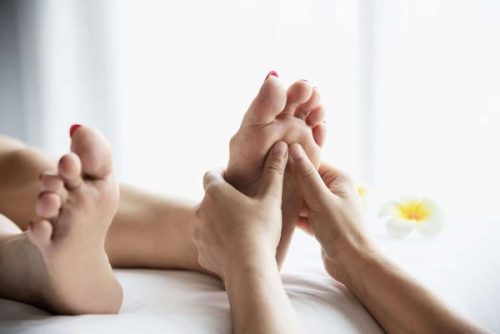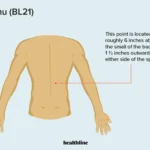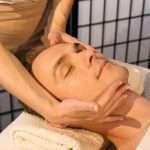Are you looking to learn how to give your partner the most relaxing massage? If so, then you have come to the right place! This article will provide you with the tips and techniques you need to know in order to give your partner the most relaxing massage possible. From the right kind of massage oil to the right kind of touch, you will learn how to massage your partner in the way they will enjoy and appreciate the most. So, let’s get started!
Benefits of Massaging Your Partner

Massaging your partner can be a wonderful way to show them love and care. It can help create a deeper connection and strengthen the bond between you, while also providing numerous physical and mental benefits. Here are some of the main benefits of massaging your partner:
| Benefit | Description |
|---|---|
| Relaxation | Massage can reduce stress and tension, promoting relaxation and helping your partner to feel more at ease. |
| Better Sleep | Massage can help to improve sleep quality, enabling your partner to wake up feeling more rested. |
| Pain Relief | Massage can help to alleviate physical pain and discomfort, particularly in areas of the body that are feeling tense or sore. |
| Improved Circulation | Massage can help to improve blood circulation throughout your partner’s body, allowing them to feel more energized. |
| Better Mood | Massage can help to increase endorphins, the body’s natural feel-good hormones, leaving your partner feeling happier and more content. |
In addition to these benefits, massaging your partner can also be a great way to show them that you care, and to strengthen the bond between you. Learning how to give your partner a relaxing massage is a great way to ensure that your relationship remains healthy and strong.
Physical Benefits
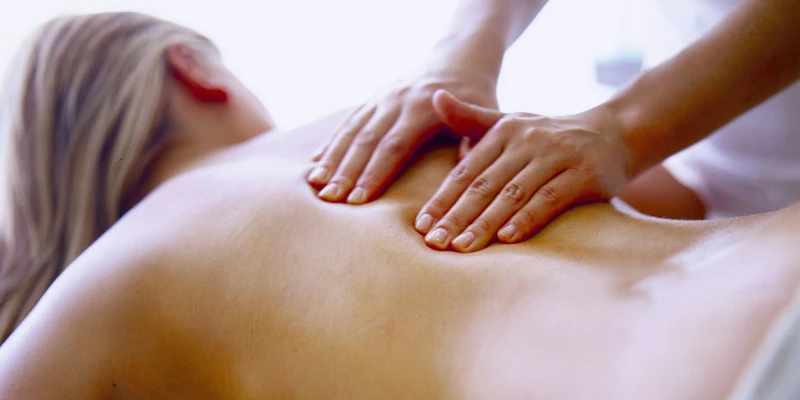
- Reduces stress and tension – Massages help to reduce stress, tension, and anxiety. This can result in improved mood and increased energy levels.
- Improves circulation – Massage helps to promote better blood circulation, which can help to improve overall health and well-being.
- Reduces muscle pain – Massages can help to reduce muscle pain and tension in the body, as well as reducing any inflammation or stiffness in the joints.
- Improves flexibility – Massage helps to increase flexibility in the muscles and joints, which can lead to better posture and improved mobility.
- Improves skin health – Massages can help to improve the elasticity of the skin, as well as improving its tone and texture.
Mental Benefits
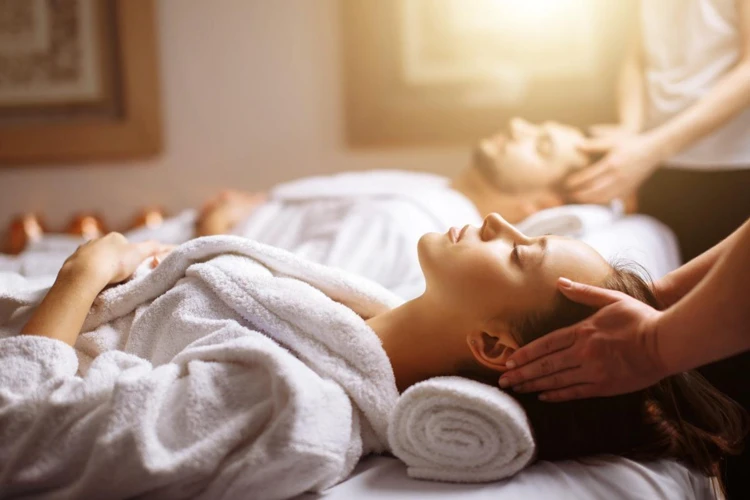
Giving your partner a massage can improve their mental health in many ways. Massage can reduce stress, anxiety, and depression. It can also help improve a person’s sense of wellbeing. It can also increase relaxation and reduce muscle tension. This can result in improved sleep quality and an overall improved mood. Massage can also help to reduce pain and enhance relaxation. Massage can also help to improve communication and foster intimacy between partners. Finally, massage can help to reduce stress hormones and boost endorphin production, which helps improve mood and reduce anxiety.
Tips for Giving a Massage
- Set the Mood: Create a calming atmosphere with dim lighting, scented candles, and soothing music.
- Start Slow: Begin with gentle touches and long strokes to establish the connection between your hands and your partner’s body.
- Apply Pressure: Use your thumbs and knuckles to apply firm pressure to your partner’s muscles.
- Vary Your Pressure: Move from light to heavy pressure, and back again, to create a more relaxing and enjoyable massage.
- Use Oils: Use a massage oil or lotion to help reduce friction and prevent the skin from drying out.
- Focus on the Neck and Shoulders: This is the area where most people tend to hold stress and tension.
- Pay Attention to Feedback: Ask your partner how the massage feels, and adjust your pressure and technique accordingly.
- End with a Light Touch: Finish the massage with light, gentle strokes to help your partner relax even more.
Preparing a Massage
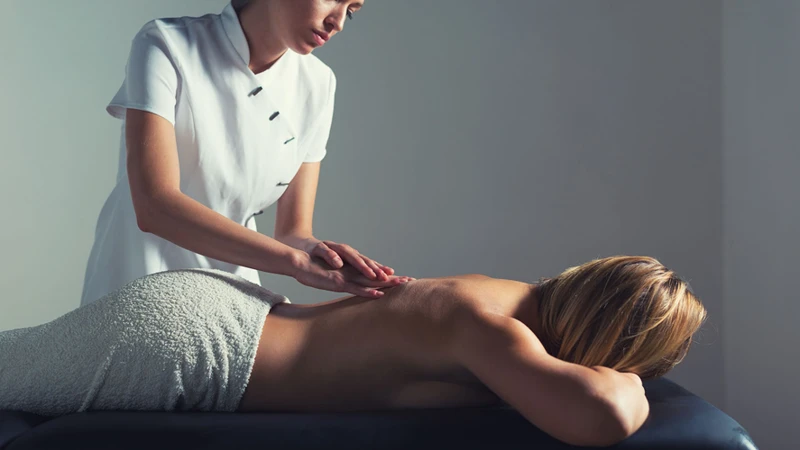
Set the Mood: Create a soothing atmosphere by dimming the lights, burning scented candles, playing calming music, and setting the room temperature to a comfortable level.
Gather Supplies: You will need a massage oil, lotion or cream, a massage table or a comfortable bed and clean sheets, and an extra towel.
Prepare the Massage Area: Place the massage table in the center of the room, and lay out the clean sheets. Place the towel, oil, and lotion within reach.
Undress: Both the receiver and giver should undress to their comfort level. If the receiver is uncomfortable, they can keep their underwear on.
Position: Have the receiver lie on their stomach and use a pillow to prop up their head and neck. Cover them with a sheet, leaving the area to be massaged uncovered.
Ready to Go: When the massage area is set up and both parties are comfortable, the massage can begin.
Working on Specific Areas
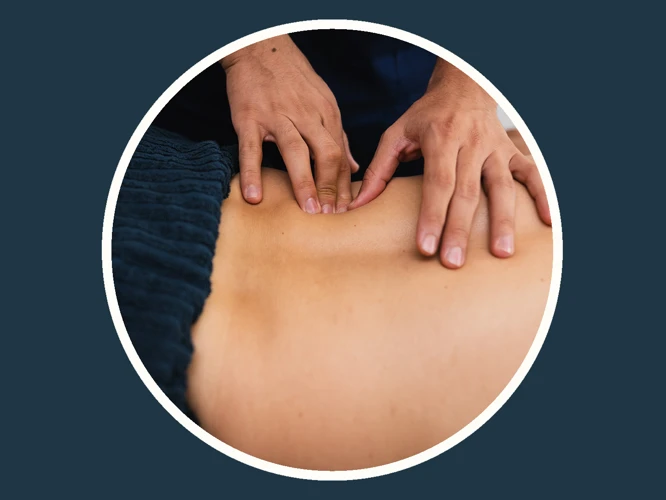
When giving a massage to your partner, it is important to focus on specific areas of their body. This includes the neck and shoulders, lower back, and feet. It is also important to pay attention to areas of tension and stress. You can also focus on areas that may need special attention, such as tightness around the jaw or between the shoulder blades. By working on these areas, you can help to reduce stress and tension, and increase relaxation.
To massage the neck and shoulders, start at the base of the neck and use your hands to apply pressure in small circular motions. Move up towards the top of the head and work your way down the shoulders and arms.
To massage the lower back, start at the base of the spine and use your hands to apply pressure in small circular motions. Move up towards the top of the back, following the natural curve of the spine.
For the feet, use your thumbs to apply pressure to the sole of the foot. Move up the arch of the foot and around the toes.
When massaging any area, it is important to be gentle and to use a light touch. Always use a lubricant, such as oil or lotion, to reduce friction and make the massage more enjoyable.
Following Up
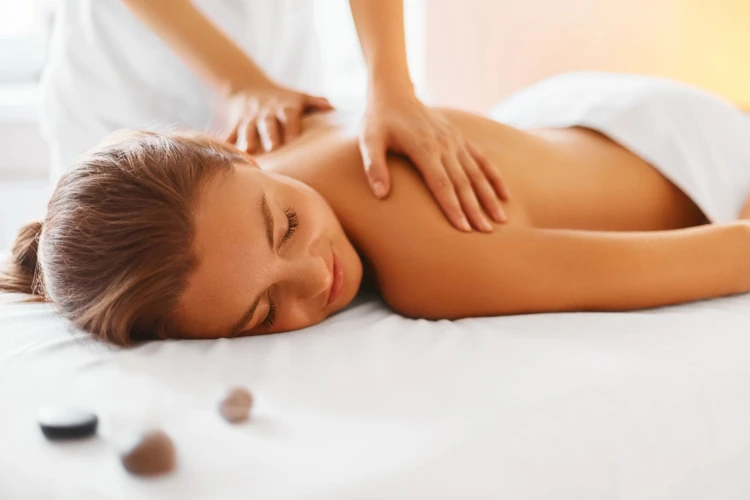
Once you have given your partner a massage, it is important to follow up. Schedule a follow up appointment with your partner either the same day or the day after. During this appointment, discuss your partner’s experience and the results of the massage. Ask for feedback on any areas that may need adjustment. Also, ask your partner how they felt after the massage and if they experienced any soreness. Make sure to remind your partner that massage should not be painful and suggest any adjustments they may need to make.
It is also important to ask your partner if they plan to continue with massage treatments. If they do, ask them to schedule another appointment so that you can continue to provide them with a relaxing massage experience. If they decide not to continue, suggest alternatives such as yoga, stretching, or other relaxation techniques.
Finally, make sure to thank your partner for their time and participation. A simple thank you can go a long way and serve as a reminder that massage is a valuable part of overall health and wellness.
Techniques for Giving a Relaxing Massage

- Use a Light Touch – When giving a massage, use a light touch at first. Start with a gentle stroking motion, gradually increasing the pressure until your partner is feeling relaxed and comfortable.
- Move in Slow Circles – Once you have established a light touch, continue to use slow circles to massage your partner’s back, neck and shoulders. This will help to increase relaxation and ease tension.
- Pay Attention to Tense Areas – Pay close attention to areas of tension when giving your partner a massage. Use a bit more pressure in these areas to help release the tension.
- Alternate Pressure – To ensure that the massage is as relaxing as possible, alternate between light and firm pressure. This will help to stimulate the muscles and keep your partner comfortable.
- End with Gentle Stroking – To finish the massage, use gentle stroking motions to help your partner relax even further. This will help to provide a feeling of calm and relaxation.
These techniques, coupled with a few essential oils, will help to ensure that you give your partner the most relaxing massage possible. Learning how to massage your partner can be a great way to show your love and appreciation. With a bit of practice and patience, you can learn how to give your partner the most relaxing massage.
Swedish Massage

- Helps Relieve Tension – Swedish massage is very effective in relieving tension and improving circulation in the body. It also helps to relax muscles, increase blood flow and reduce stress.
- Promotes Relaxation – Swedish massage helps to relax the body and mind by improving circulation, enhancing muscular tone and relieving stress. It is known to be beneficial in reducing anxiety and depression.
- Improves Circulation – Swedish massage helps to improve circulation by increasing circulation in the body. This helps to reduce fatigue and improve the body’s ability to heal itself.
- Enhances Muscle Tone – Swedish massage also helps to improve muscle tone and reduce stiffness. This can be beneficial for athletes who are looking to improve their performance.
- Relieves Pain – Swedish massage can be used to help relieve pain and tension in the body. It can be used to help manage chronic pain, reduce stress and improve mobility in the body.
If you want to learn how to massage your partner, Swedish massage is a great place to start. It is a gentle, relaxing massage technique that can help to reduce tension, improve circulation, enhance muscle tone and relieve pain. With practice, you can give your partner a soothing massage that will leave them feeling relaxed and refreshed.
Shiatsu Massage
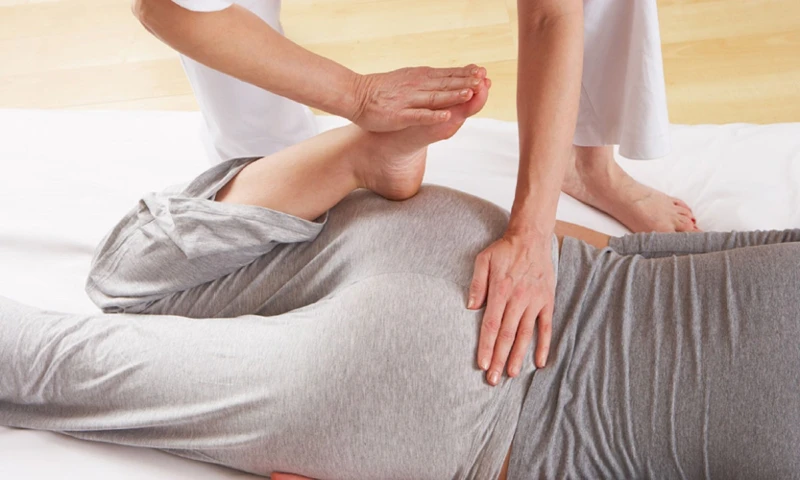
Shiatsu massage is a centuries-old form of traditional Chinese massage. It involves applying pressure to specific points on the body using fingers, thumbs, and palms. This type of massage is especially beneficial for relieving tension and improving circulation. To learn how to massage your partner using shiatsu, begin by sitting in a comfortable position and having your partner lie down on their back. Use your thumbs to apply pressure to the point on their body that corresponds to the area of focus. For example, if you are targeting the back, use your thumbs to press on the shoulders. As you apply pressure, focus on the areas that feel tight and apply a constant pressure for about 10-15 seconds. Then move to another area and repeat the process. You can also use your palms to apply a gentle, circular motion over the entire body. This will help to improve circulation and relax the muscles. Learning how to massage your partner using shiatsu techniques is a great way to provide a deep sense of relaxation.
| Benefits of Shiatsu Massage |
|---|
| -Relieves tension |
| -Improves circulation |
| -Eases muscle pain |
| -Reduces stress and anxiety |
| -Increases energy levels |
Deep Tissue Massage
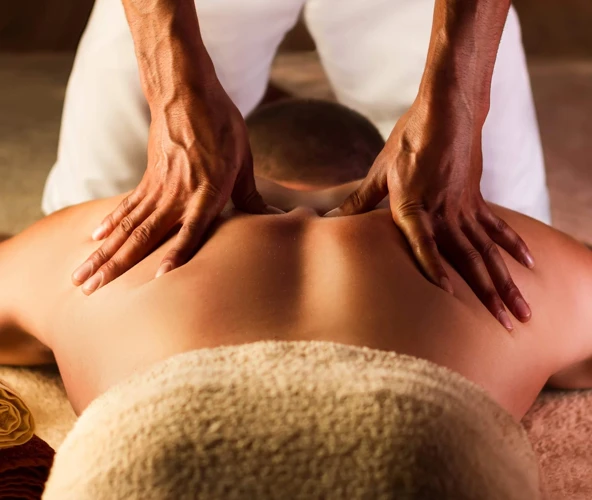
Deep Tissue Massage is a type of massage that focuses on the deeper layers of muscle and fascia in the body. The massage therapist uses a range of techniques, such as kneading, stretching and applying pressure to target the deeper layers of muscle tissue. This type of massage can be beneficial for releasing chronic muscle tension, improving circulation and increasing flexibility. To learn how to massage your partner, it is important to understand the different techniques used in Deep Tissue Massage. The main techniques used are kneading, friction, and trigger point release. Kneading involves applying pressure with the fingers, thumbs, or palms and using circular motions to massage the deeper layers of muscle. Friction involves applying pressure with the fingertips and making short circular motions on the muscle. Trigger point release involves applying pressure to specific points on the muscle and holding for a few seconds before releasing. Once you understand the techniques used in Deep Tissue Massage, you can learn how to massage your partner for maximum relaxation and benefit.
Reflexology
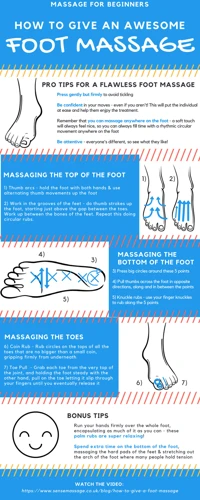
Reflexology is a type of massage therapy that focuses on applying pressure to specific areas on the feet, hands, and ears. It is believed that these areas are connected to different organs and systems within the body, and that stimulating them can help to promote relaxation and reduce physical and emotional tension. Reflexology can be used to treat a wide range of ailments, from headaches to digestive issues. To learn how to massage your partner using reflexology, start by having your partner sit comfortably in a chair and take off their shoes and socks. Then, using your thumbs, press and apply pressure to the reflex points on their feet. You should work your way up the feet, starting from the base of the toes and working your way towards the ankles. Make sure to use circular motions as you work. Pressure should be firm and steady, but not too strong. Once you’ve finished massaging the feet, move on to the hands, applying pressure to the palms, knuckles, and fingertips. Finally, use your thumbs to massage the ears, starting at the lobes and working your way up. Be sure to use gentle strokes and avoid tugging or tugging on the ears. With practice, you can learn how to massage your partner using reflexology and help to promote physical and emotional relaxation.
Safety Considerations
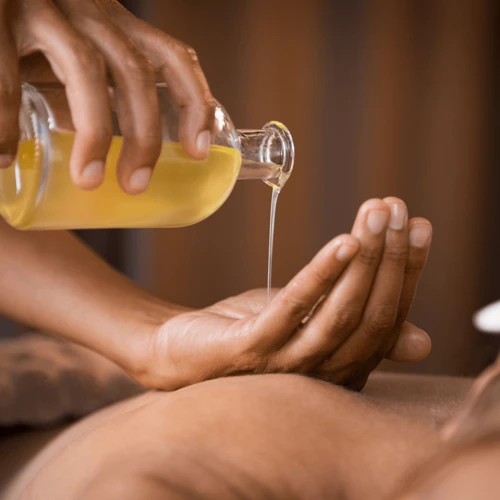
Confirm Your Partner’s Comfort Level: Before you begin, ensure that your partner is comfortable with the idea of being massaged. Ask them to communicate if anything feels uncomfortable or uncomfortable and respect their wishes.
Check for Contraindications: Before beginning, check for any contraindications which may limit the type of massage you can give. For instance, certain medical conditions or medications may require a certain type of massage, or may even prohibit massage altogether.
Set the Mood: You want your partner to feel relaxed and comfortable before and during the massage. Create a relaxing atmosphere, with comfortable bedding, dimmed lights, and soothing music.
Check the Temperature: Make sure the room is warm enough so that your partner will not feel cold during the massage.
Choose Appropriate Oils: Choose an appropriate massage oil – one that is not too greasy and will not irritate your partner’s skin.
Be Gentle: Don’t apply too much pressure, as this can be uncomfortable and even painful for your partner.
Be Mindful of Time: Don’t spend too much time on any one area of your partner’s body; instead, focus on giving a full-body massage.
Getting Professional Training
When learning how to massage your partner, getting professional training is the best way to ensure you are giving a relaxing massage. Professional training will give you the knowledge and experience needed to give a proper massage, as well as the confidence to do so.
When enrolling in a massage course, look for one that focuses on relaxation massage. This type of massage is designed to be calming, soothing, and stress-relieving. Make sure the course covers topics such as anatomy, physiology, massage techniques, and massage theory.
In addition to classes, you can also get hands-on experience through massage clinics or volunteer opportunities. This allows you to practice your skills and gain confidence in giving a proper massage. It can also be a great way to learn different techniques from different masseuses.
Finally, consider taking a massage workshop or retreat. These retreats are designed to build your confidence and teach you how to give your partner the most relaxing massage. The workshops may include lectures, hands-on practice, and guided meditations, all of which will help you become a more experienced masseuse.
Learning how to massage your partner can be a rewarding experience. With the right training and practice, you can give your partner the most relaxing massage possible.
Frequently Asked Questions
What are the Essential Items Needed to Give a Massage?
Massage therapists require a few essential items to provide a relaxing session for their clients. These include massage table or chair, sheets or towels, massage oil or lotion, pillows, and music. Additionally, it is important to ensure the environment is comfortable, with sufficient light and appropriate temperature. Consider investing in high-quality products for the best massage experience.
What Techniques Should I Use to Give a Massage?
- Swedish Massage: This massage technique uses long strokes, kneading, and circular motions to relax the body and increase circulation.
- Deep Tissue Massage: This type of massage focuses on the deeper layers of muscle tissue and aims to release tension in the body.
- Trigger Point Massage: Trigger point massage is used to address knots and tight areas in the muscles. Pressure is applied to the trigger points to release the tension.
- Sports Massage: Sports Massage is a massage technique that focuses on specific areas of the body that are affected by physical activity.
- Shiatsu Massage: Shiatsu Massage is a form of Japanese massage that applies pressure to specific points on the body to release tension and promote relaxation.
How Long Should a Massage Last?
The duration of a massage depends on the individual needs of the recipient. Generally, a massage should last for at least 30 minutes to ensure that the recipient can feel the full benefits of the massage. However, a massage session can last up to two hours, depending on the depth of the massage. Always ensure that the recipient is comfortable and not in pain during the massage.
Are There Any Safety Precautions to Consider When Giving a Massage?
Appropriate Pressure: When giving a massage, it is important to be aware of the pressure being applied. Too much pressure may cause pain or discomfort for the receiver.
Sensitive Areas: Be mindful of sensitive areas, such as the neck, lower back, and feet. Apply lighter pressure in these areas.
Allergies: If you are using oils, check with the receiver beforehand to make sure they are not allergic.
Hygiene: Make sure both yourself and the receiver are clean and well-groomed. Use fresh and clean towels, and ensure that your hands are clean.
Communication: Establish a comfortable level of communication with the receiver. Ask for feedback on the pressure and techniques being used.
What are some tips for giving the most relaxing massage?
- Create a Relaxing Atmosphere: Create a calm environment by dimming the lights, playing soothing music, and using scented candles or oils.
- Communicate: Talk to your partner to ensure they are comfortable and relaxed throughout the massage.
- Choose a Massage Oil: Use a massage oil or lotion to help your hands glide smoothly on your partner’s skin.
- Use Different Techniques: Incorporate a variety of massage techniques such as kneading, effleurage, and petrissage to create a deeply relaxing experience.
- Vary Pressure and Speed: Adjust the pressure and speed of your massage strokes according to your partner’s preference.
- Focus on the Neck and Back: Pay special attention to the neck and back area as these are the most common areas of tension.
- End with a Gentle Touch: Finish the massage with gentle strokes to induce a feeling of relaxation.
Conclusion
Giving your partner a massage is a great way to show your love and appreciation for them. With the right techniques and a few simple steps, you can give your partner a massage that will provide relaxation and pleasure. Remember to use slow and gentle movements, choose the right oils and always keep the environment comfortable and relaxed.



